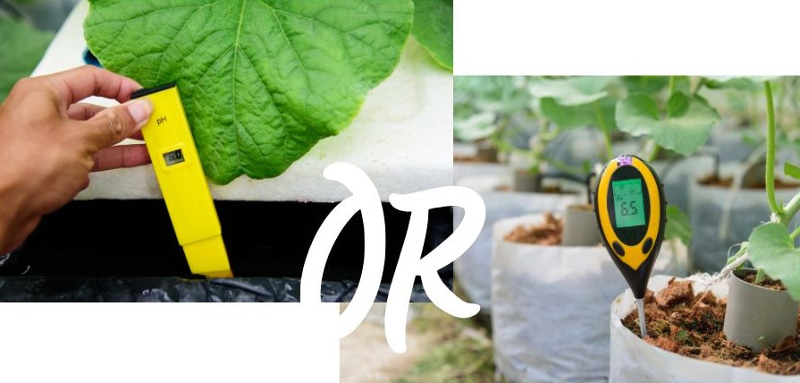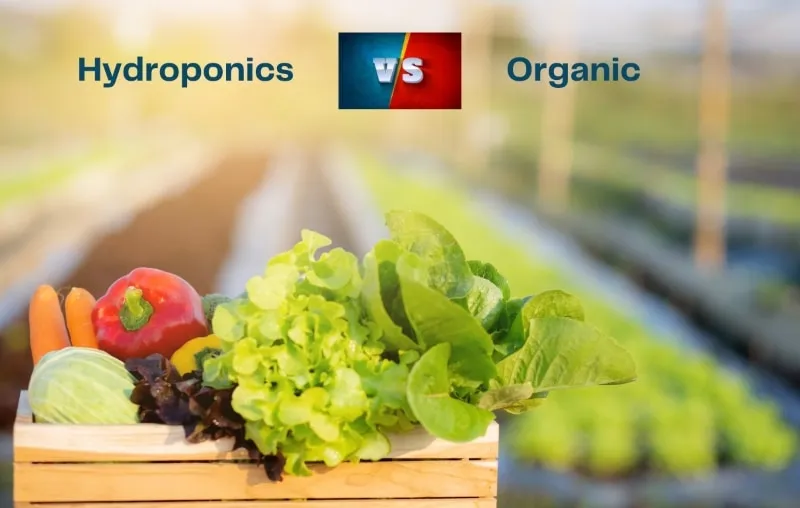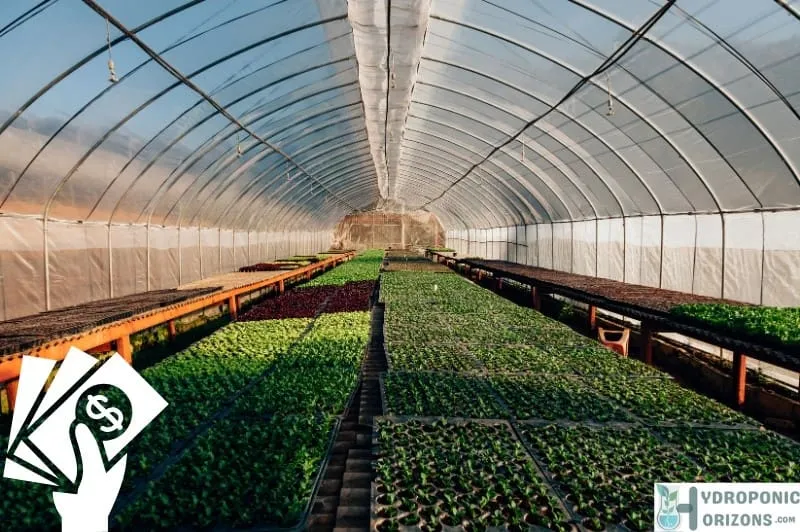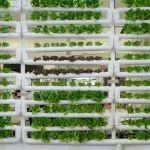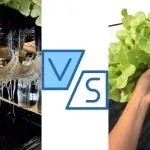Hydroponics is a method of growing plants without soil, utilizing nutrient-rich water to deliver sustenance directly to the plants’ roots. As the practice of hydroponics gains popularity among hobbyists and commercial growers alike, having a thorough understanding of the process is crucial to success.
It’s great to be able to have free and instant access to knowledge via the internet but it can be overwhelming if you want a detailed step-by-step process to follow as you build up your hydroponic garden. Therefore, books on hydroponics serve as valuable resources for those interested in this innovative gardening method.

We have considered several factors while compiling a list of the best hydroponic books. The clarity of the writing, the depth and breadth of the topics covered, and the quality of illustrations or visual aids can contribute to a comprehensive and helpful guide. We selected books appropriate to various levels of knowledge and experience – beginner-friendly guides for newcomers, more specialized books for seasoned growers, and books that provide a balance for a wider audience. We also looked for authors with practical experience in the field of hydroponics and a strong background in either academic or professional capacities in the industry.
With these factors in mind, we thoroughly researched and analyzed the best books on hydroponics to help you become a successful hydroponic gardener, regardless of your skill level or background. Now, let’s dive into the top selections chosen by our team.
Best Books On Hydroponics
Best overall DIY hydroponics book: DIY Hydroponic Gardens by Tyler Baras
Best of the commercial hydroponics books: Hydroponic Food Production by Howard M. Mesh
Below, you’ll find our carefully curated list of the top books on hydroponics, perfect for enthusiasts and professionals alike. We’ve made sure to select informative and engaging reads to help expand your knowledge and expertise within the world of hydroponics.
Related: If you want to get a quick read on how to get started in hydroponics, we have our own free blog post right here!
Best Hydroponic Books For Beginners
Hydroponics: The Essential Hydroponics Guide – By Andy Jacobson
This concise hydroponics guide covers:
- Introduction to Hydroponics
- Hydroponic Growing Mediums
- Types of Hydroponic Systems
- Plant Nutrition and Lighting
- Growing Process and Creating Your Own Systems
- Crops Suited to Hydroponic Gardening
This hydroponics guide is a great starter tool for those wanting to learn the fundamentals of hydroponic gardening at home.
- Easy-to-follow steps
- Covers a variety of plants
- Provides basics for beginners
- Limited content
- Formatting issues
- Sparse information
We found “Hydroponics: The Essential Hydroponics Guide” to be a helpful resource in introducing us to the world of hydroponic gardening. The step-by-step approach made it easy for us to follow along and allowed us to understand the process of growing fruits, vegetables, and herbs at home without soil.
This book covers a variety of plants, which is helpful for those trying to explore their options when starting a hydroponics garden. The basics provided in this guide are perfect for beginners who have little to no knowledge about hydroponics, giving them a solid foundation in this gardening method.
However, we did encounter some limitations while using this guide. The content is quite limited, and some critical details seem to be missing, which could potentially be found in other books on the same subject. Additionally, the formatting of the book appears to have some issues (e.g., chapter page numbers not corresponding to actual chapter locations).
Despite these limitations, “Hydroponics: The Essential Hydroponics Guide” helped us get started with our hydroponic garden journey. As beginners, we appreciated the simplicity of the guide and the straightforward instructions provided. However, it may be necessary to explore additional resources to gain a more in-depth understanding of hydroponic gardening. Overall, this book can serve as a solid starting point for those interested in trying hydroponics at home.
Hydroponics for Beginners: Start Growing Vegetables at Home Without Soil – By Nick Jones
In Hydroponics for Beginners, you’ll learn:
- Essential equipment
- How to save electricity with artificial lighting
- Best growing systems and germination rates
- Mastering cloning and selecting plants for hydroponics
- Cost-effective nutrient mixing
- Pre-harvest tip for better tasting crops
- Beneficial insects for pest control
- Troubleshooting common problems.
We found this book to be an informative guide, perfect for those looking to start hydroponic gardening at home, regardless of experience.
- Easy to understand language, perfect for beginners
- Comprehensive coverage of various hydroponic systems
- Helps with troubleshooting common plant issues
- Could use more pictures and step-by-step examples
- Lacks some advanced concepts
- Tone could be more authoritative
Our experience with Hydroponics for Beginners by Nick Jones was quite enriching. The book uses simple language to explain the various hydroponic systems, making it easy for someone new to the concept to understand the basics. We learned about the different methods to set up our hydroponic garden, and it even helped us troubleshoot some common plant problems.
That said, we noticed that the book could benefit from more pictures and examples to support its instructions. We found ourselves craving more visual aids to fully grasp some of the concepts. Furthermore, for those who are already familiar with hydroponic gardening, this book might not offer many advanced techniques or strategies. It primarily covers the basics, which are great for beginners, but it may not be the best choice for more experienced hydroponic gardeners.
Overall, we think that Hydroponics for Beginners is a solid starting point for those venturing into hydroponic gardening. Its clear explanations and comprehensive coverage make it accessible for everyone, while its troubleshooting tips are helpful for addressing minor plants’ issues. However, it could use a few improvements in terms of visual aids and confidence in its tone.
Hydroponics: The Complete Beginner’s Guide – By Jonas Grow
This book covers:
- What hydroponics is and its sustainability benefits
- The history and workings of hydroponic systems
- Types of systems, from easy to complex
- Necessary equipment for your system
- Building a simple, cost-efficient setup
- Plant growth and nutrient requirements
- Maintaining your system for success
- Troubleshooting common problems.
An excellent resource for anyone looking to dive into hydroponics and start growing fresh, organic vegetables at home without soil.
- Comprehensive system design information
- Accessible for beginners and engaging for advanced users
- Detailed walkthroughs with clear images
- Assumes some prior hydroponic knowledge
- Lacks smaller-scale project examples
- Small font and light grey ink may be difficult for some to read
If you’re someone new to hydroponics, we found Hydroponics: The Complete Beginner’s Guide to be surprisingly informative and easy to follow. The book begins with an overview of hydroponics, describing the different systems and essential equipment needed for a successful setup. It then moves on to provide step-by-step instructions that guide the reader through creating their own hydroponic garden, catering to varying budgets.
One aspect we particularly appreciated about this book is how up-to-date the information is, considering its publication date in March 2020. This means that the techniques and equipment discussed in the book are current and relevant to today’s market. This is helpful because some hydroponic books can become outdated rather quickly due to the rapid advancements within this field.
The only drawback of this book, especially for beginners, is the lack of visuals such as photographs, diagrams, or step-by-step illustrations to help reinforce the information. However, the text is still clear and easy to follow, making it ideal for those who can comprehend written instructions well. Another minor drawback is the limited length of the book, with only 144 pages. This provides a solid foundation for understanding hydroponics, but more advanced practitioners may find themselves wanting more in-depth information.
Despite its few drawbacks, we believe that Hydroponics: The Complete Beginner’s Guide is an excellent starting point for anyone interested in exploring hydroponics as a method of growing fresh and organic vegetables at home. The book’s practical approach and step-by-step instructions make it accessible and engaging for individuals of all experience levels and budgets.
Best Books On Hydroponics for DIYers
DIY Hydroponic Gardens: How to Design and Build an Inexpensive System for Growing Plants in Water – By Tyler Baras
This guide has:
- Nutrient solution recipes
- Light and ventilation recommendations
- Equipment guide
- Growing and maintenance instructions
- 12+ system builds
- Crop selection charts
We found this book to be an excellent resource for anyone interested in building their own hydroponic system, from beginners to advanced gardeners.
- Comprehensive system design information
- Accessible for beginners and engaging for advanced users
- Detailed walkthroughs with clear images
- Assumes some prior hydroponic knowledge
- Lacks smaller-scale project examples
- Small font and light grey ink may be difficult for some to read
When we were recently exploring hydroponic gardening, we came across the “DIY Hydroponic Gardens” book and appreciated its well-rounded approach. The author covers the key aspects of system design, potential challenges, and walks through the entire process of building a hydroponic system from scratch.
What stood out to us were the clear images and detailed walkthroughs, providing a visual guide that made setting up our hydroponic system much simpler. It felt like the author had real-world experience and could empathize with our journey into hydroponic gardening.
However, we did find that the book assumes some prior knowledge of hydroponics, which might be a disadvantage for complete beginners. Also, we would have appreciated examples of smaller-scale projects as not everyone has the space for larger systems. Lastly, some of us found the small font and light grey ink difficult to read.
Overall, we find “DIY Hydroponic Gardens” to be a valuable resource for those looking to design and build their own hydroponic systems. While it has a few drawbacks, we believe the content and presentation make it an engaging and informative book for people interested in growing plants in water.
Hydroponics and Greenhouse Gardening: 3-in-1 Gardening Book – By Richard Bray
This collection covers:
- Choosing the right hydroponic system, crops, and growing medium
- Nutrients, lighting, building, and maintaining systems
- Identifying and combating pests and diseases
- Choosing the right type of greenhouse gardening, heating, ventilation, lighting, and irrigation
- Essential equipment, scheduling plants, growing herbs, vegetables, and fruits
- Integrating hydroponics into your greenhouse
We highly recommend this comprehensive 3-in-1 gardening book for those looking to grow vegetables, herbs, and fruits all year round using hydroponics and greenhouse methods.
- In-depth and easy-to-follow information
- Suitable for beginners and experts
- Covers a wide range of topics
- Black and white hand-drawn pictures
- Some readers found it misleading with images of 3 books
- Better presentation could be helpful
We recently got our hands on this Hydroponics and Greenhouse Gardening book, and we must say, it has impressed us with the wealth of information it provides. That’s not surprising because it is by Richard Bray, the author of the bestselling Urban Homesteading Series. Whether you’re a novice or hobbyist in hydroponics, we found the book easy to understand and follow, giving us a solid foundation on how to start our own indoor gardening project.
From the various hydroponics methods to selecting the best greenhouse setup to suit our needs, this book offers thorough and informative guidance. After going through its pages, we feel confident enough to navigate our way through the world of hydroponics and greenhouse gardening.
However, we do have some reservations about the presentation of the material. The book has black and white hand-drawn illustrations instead of colored photographs, which could make it more visually appealing and helpful to readers. The cover image and the back illustration might also be somewhat misleading since they depict three books when in fact, it is just one book separated into three sections.
Despite these minor drawbacks, we believe that the Hydroponics and Greenhouse Gardening book is an excellent resource for both beginners and experienced gardeners looking to expand their knowledge on year-round indoor gardening. Overall, we found it to be an engaging and informative read that will undoubtedly help us grow our produce all year round.
Best Books On Hydroponic Farming
Hydroponic Food Production: A Definitive Guidebook for the Advanced Home Gardener and the Commercial Hydroponic Grower – By Howard M. Resh
This book is a guide on:
- How to set up a hydroponic operation using various hydroponic cultures
- Greenhouse environmental control systems and sustainable greenhouse technology
- The use of automation and robotics in harvesting, grading, and packing
- Indoor vertical farming and growing systems
- Tropical hydroponics and rooftop greenhouses
- Automation in large-scale raft culture and nutrient film technique operations
We believe this comprehensive guide is a must-have for both advanced home gardeners and commercial hydroponic growers.
- In-depth information on various hydroponic systems
- Updated 8th edition with latest advancements
- Suitable for both home gardeners and commercial growers
- Some users reported poor binding quality
- Available only in paperback format
- Slightly heavy at 3.22 pounds
Our experience with Hydroponic Food Production: A Definitive Guidebook has been nothing short of amazing. As an 8th edition publication, it incorporates the latest advancements in the field of hydroponics, making it an essential reference for anyone serious about hydroponic food production.
The book covers various hydroponic systems, providing in-depth information and details that are invaluable for both advanced home gardeners and commercial growers. The thorough explanations in the guide allowed us to make educated decisions about the best hydroponic system for our needs.
One of the areas where this book really shines is its practicality. While some hydroponic guides are too technical or assume prior knowledge, this Definitive Guidebook caters to a wide audience, making it easy to understand and implement the concepts presented. We were able to successfully set up our hydroponic garden following the advice given in this guide.
However, we did encounter a few drawbacks with the physical quality of the book. Some users reported that the binding came apart quickly, which was disappointing, given the wealth of information inside. The weight of the paperback book, at 3.22 pounds, might also be inconvenient for some readers.
Overall, if you are looking to deepen your understanding of hydroponics and create a successful food production system, Hydroponic Food Production: A Definitive Guidebook is an excellent resource. Despite a few physical drawbacks, the wealth of knowledge in this guide makes it a worthy investment.
Plant Factory: An Indoor Vertical Farming System for Efficient Quality Food Production – By by Toyoki Kozai, Genhua Niu, Michiko Takagaki
This book includes:
- Overview of Closed Plant Production Systems (CPPS)
- Basics of Physics and Physiology – Environments and Their Effects
- System Design, Construction, Cultivation and Management
- Plant Factories in Operation
- Updated information on LED technology and indoor vertical farming
- Revised information on business R&D and commercial PFALs.
This book is a must-have for hydroponic enthusiasts looking for comprehensive information on indoor vertical farming systems.
- Comprehensive content
- Updated LED technology information
- Easy-to-understand layout
- A bit pricey
- Dense with technical information
- May be overwhelming for beginners
After diving into “Plant Factory: An Indoor Vertical Farming System for Efficient Quality Food Production,” we found it to be an excellent resource for anyone interested in hydroponics. The updated edition includes valuable information on the latest advances in LED technology, ensuring that our knowledge on efficient growth strategies stays current.
In our experience, we appreciated the book’s organization and found it easy to navigate through various topics. It’s well-written and presents complex information in an accessible way, making it possible for us to quickly implement new ideas into our hydroponic projects.
However, considering the price tag, some may find it a bit expensive. Additionally, the book is quite dense with technical information, which might be overwhelming for beginners in hydroponics. For those just starting, it may be helpful to have some basic knowledge of hydroponics before delving into this comprehensive guide.
Overall, the “Plant Factory” is a valuable asset to anyone in the hydroponic community. While it’s important to be aware of the price and technical nature of the content, we believe the wealth of knowledge it provides makes it a worthy investment.








